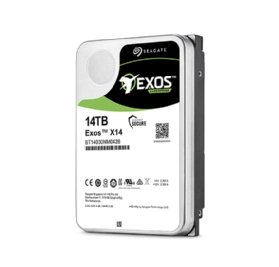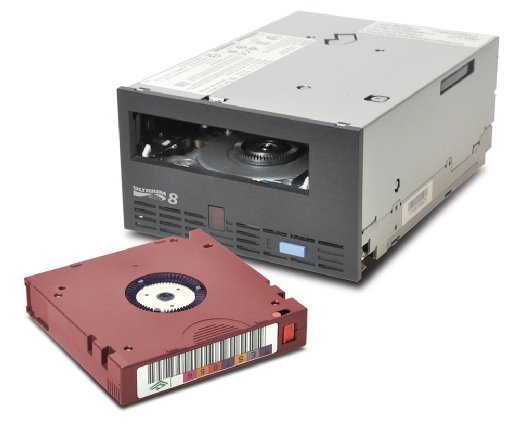
kentoh - Fotolia
Consider storage backup devices for your data protection strategy
A secondary storage device could be an important element of your data protection platform. Analyze accessibility, speed, scalability and cost before jumping in.
When you think about data backups, you're probably focused on backing up your critical workloads. But some of your backed-up data may not fit the criteria of a critical workload -- data sets that reside on primary storage and that are necessary for recovery -- because it doesn't change over time or will be archived.
Instead, noncritical data should reside on storage backup devices, which equate to nonvolatile storage that offers data protection features. A more elaborate way to define these devices is as reasonably fast and cost-effective storage used to access data that may or may not be needed on a regular basis for recovery and archiving purposes.
If you're not sure if you need storage backup devices as part of your data protection strategy, consider whether you have any of the following (or a data set like it):
- gold image virtual machines;
- scientific data;
- reference data;
- older operational data no longer needed daily (for example, all of the files marketing created in 2014); and
- data to be archived.
These kinds of data may be needed some day as part of a recovery effort but aren't necessary as part of your recovery strategy around critical workloads. To ensure this data is accessible for recovery, you need to use storage backup devices. Some common options include the following.
Flash storage arrays. Typically seen as network-attached storage, flash-based storage provides materially faster access than disk-based storage, with lower latency, and is less-prone to failure. One challenge with these arrays is the issue of cost vs. utilization; look for scalable storage products to enable more as-needed expense.

External hard drives. With the advent of USB 3.0, throughput speeds to an external drive are pretty impressive, making this an option for organizations looking to take backups off-site with relative ease. The challenge is, even with USB 3.0, you're still left with the viability of this option being dependent on the drive type.

The cloud. In many cases, cloud providers can provide faster storage at a lower cost than you could get yourself. Multiple storage tiers exist, along with storage management to move data between tiers to keep storage costs to a minimum. And with advancements in deduplication and compression technologies, backup and recovery speeds are often comparable to on-premises hardware.

Hard disk drives. While most are moving away from spinning disk, HDDs still meet the definition and remain a viable option -- and an often less expensive one. Many organizations use hard disks for secondary storage, given the data stored there does not usually have fast recovery requirements.
Legacy options. Choices such as optical media and magnetic tape are still possible today. But these older technologies have slower access and retrieval speeds that make them less desirable and are only really applicable for secondary storage or even off-site storage options.

Software-defined storage. Third-party vendors have taken the burden of managing multiple tiers of storage and simplified it with policy-based data management automation. While more like a layer on top of your secondary and even tertiary storage layers, software-defined storage could be the means by which you utilize all your existing storage hardware more seamlessly.
Choosing storage backup devices
There are a few considerations that come to mind when planning a backup and recovery strategy using secondary storage.
Accessibility. In the well-known 3-2-1 Backup Rule, the 1 represents "1 copy off-site" that you can always get to, even if your building burns down. But in today's anytime/anywhere mode of operation with the cloud, accessibility also means the speed at which you can retrieve the data, meaning "get your hands on it so that you can then recover it."
This is one of the reasons so many organizations are looking at warm and cold storage options in the cloud; the data is accessible with defined retrieval times, enabling you to proactively plan recovery scenarios for secondary data.
Speed. In theory, a DVD-RW is secondary storage. But the speed of both storing and recovering data is too slow for most organizations, not to mention the limited storage. Thinking about the speed of retrieval and recovery is critical here: Take a look at your recovery requirements for any data stored on secondary storage, and work backward to the specific device or medium to see if it will be fast enough to meet your need.
Scalability. While the data sets you store long term don't grow -- they're usually static -- the number of data sets may grow, depending on your retention strategy. For example, you may put all data that is more than a year old onto secondary storage. That means the overall data hosted on a storage backup device will grow over time. You need to ensure that, no matter what device type you choose, you have the ability to meet the secondary storage needs of the organization.
Cost-effectiveness. There's a balance that needs to be found among the previous three considerations. I'd suggest comparing the cost of your shortlisted storage backup devices against a few real-world recovery scenarios. Figure out the speed of data retrieval, recovery and so on to determine whether it may be worth it to spend the extra budget on one option over another.
Considering storage backup devices may be the next evolution in your data backup strategy, which needs at least two tiers to be effective. The primary tier gets critical data and systems back up and running, while the secondary tier focuses on data you may or may not need post-recovery. And for each tier of data, you need hardware -- whether on premises or in the cloud -- that meets the operational, financial and technical requirements posed by the organization.







